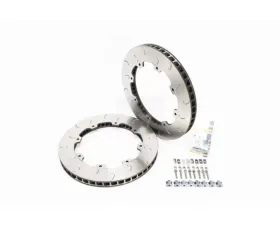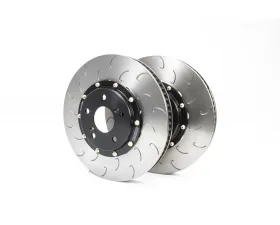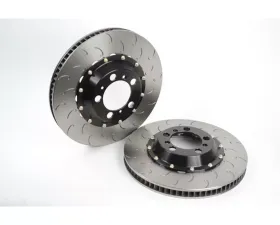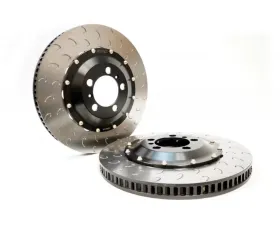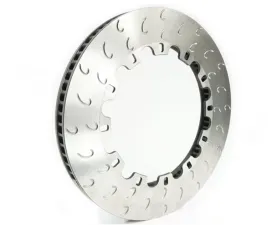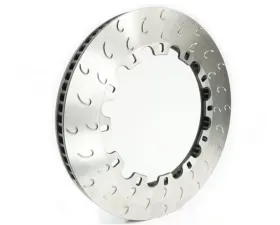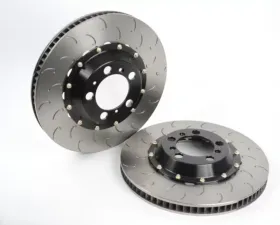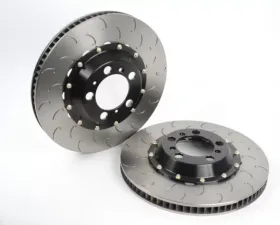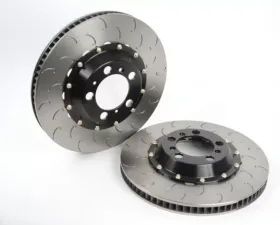Brake Rotors
Brake Rotors - Enhance your vehicle's braking performance with high-quality brake rotors from Vivid Racing. Our extensive selection includes premium options designed for durability and improved heat dissipation. Upgrade your ride today for superior stopping power and safety on the road.
AP Racing 380x34mm use OE hats J Hook Disc Pair with Hardware Nissan GT-R 2009-2011
AP Racing Essex Front 350x34mm 2-piece Competition J Hook Disc Pair Honda Civic Type-R 2018-2021
AP Racing Essex Rear 350x28mm 2-piece Competition J Hook Disc Pair Porsche 718 Boxster | Cayman GTS 4.0 2022+
AP Racing Front 408x34mm 2-piece S Vane Competition J Hook Disc Pair Front Porsche 992 GT3 Iron 2022+
AP Racing J Hook Competition Disc Replacement Ring 372x34mm Left Hand
AP Racing J Hook Competition Disc Replacement Ring 372x34mm Right Hand
Essex Designed AP Racing 2-piece Competition J Hook Disc Pair (Front 330x34mm) Porsche 718 | 991.1 | 997.2 | 981 2009-2020
Essex Designed AP Racing 2-piece Competition J Hook Disc Pair (Front 340x34mm) Porsche 981 | 991.1 2013-2016
Essex Designed AP Racing 2-piece Competition J Hook Disc Pair (Front 345x30mm) Chevrolet C7 Stingray Z51 2014-2015
Essex Designed AP Racing 2-piece Competition J Hook Disc Pair (Front 350x34mm) Porsche 996 | 997.1 GT3 2004-2008
Essex Designed AP Racing 2-piece Competition J Hook Disc Pair (Front 372x34mm) Audi RS3 MK3 8V 2017+
Essex Designed AP Racing 2-piece Competition J Hook Disc Pair (Front 372x34mm) Audi TTRS MK3 8S 2018+
Essex Designed AP Racing 2-piece Competition J Hook Disc Pair (Front 380x34mm) Audi R8 4.2 R8 5.2 | Lamborghini Gallardo 2003-2014
Essex Designed AP Racing 2-piece Competition J Hook Disc Pair (Front 380x34mm) Ford Mustang GT Performance Pack 2015-2022
Essex Designed AP Racing 2-piece Competition J Hook Disc Pair (Front 380x34mm) Lamborghini Huracan and Huracan Performante 2015-2020
Essex Designed AP Racing 2-piece Competition J Hook Disc Pair (Front 380x34mm) Porsche 991.1 | 991.2 GT3 & GT3RS 2013-2019
Essex Designed AP Racing 2-piece Competition J Hook Disc Pair (Front 380x34mm) Porsche 997 Turbo S | 991.1 | 981 2010-2019
Essex Designed AP Racing 2-piece Competition J Hook Disc Pair (Front 380x34mm) Porsche 997.1 | 997.2 GT3 2007-2012
Essex Designed AP Racing 2-piece Competition J Hook Disc Pair (Front 398x36mm) Ferrari 458 | 488 | F12 2012-2015
Essex Designed AP Racing 2-piece Competition J Hook Disc Pair (Front 398x36mm) Ferrari F430 Scuderia 2008-2009
Essex Designed AP Racing 2-piece Competition J Hook Disc Pair (Front 398x36mm) Lamborghini Aventador 2012-2021
Essex Designed AP Racing 2-piece Competition J Hook Disc Pair (Front 398x36mm) Mercedes Benz AMG GT S
Essex Designed AP Racing 2-piece Competition J Hook Disc Pair (Front 410x36mm) Porsche 991.1 & 991.2 GT3 GT3RS GT2RS 2013-2109

The Big Importance of Brakes
Perhaps even more important than making your car accelerate faster, is making your car stop before you crash.
Modifying a car always starts with increasing horsepower and torque. And then to handle the added muscle, we proceed to upgrading the suspension with more capable shocks and beefier springs. A wheel and tire package comes next for more contact patch. By now, we may have made Tracy Chapman’s Fast Car.
But then to make a turn so we won’t fall off a cliff, we need to upgrade the car’s brakes. And brakes aren’t just essential for our fast road cars, it is also a very important part of racing. Drag cars need strong brakes to not end up in a tree. Formula 1 even uses carbon fiber brakes to make sure the cars stop properly before taking the fast, sweeping chicanes at Imola.
Bigger is Better!
The ideology that comes with “bigger is better” isn’t always accurate.
Unless you have a wonderfully set-up chassis and suspension, bigger wheels in rubber-band tires will always result in a harsh ride. A large capacity engine might give you all the power that you need but it is very heavy and very thirsty.
On the contrary, this idea might be accurate on a car’s braking system. Big cross-drilled brake rotors are more effective in stopping your modified car especially when paired with multi-piston calipers and big brake pads.
However, to have a more effective braking power, you need a more capable master cylinder and stronger steel-braided brake lines.
Mind you, because of small-ish wheels, Formula 1 cars only have 12- or 13-inch rotors. Tiny, yes, but made of carbon fiber which makes it cost more than a fully-optioned Ford Mustang Bullitt – and that’s only one disc. So Formula 1 brakes are big … in cost.
Which Brake Rotors are Right for My Car?
Unless your daily driver is a Porsche 911 GT3, most OEM brake rotors are designed for road use only. It can take most daily use in the concrete jungle, in stop-and-go traffic. But once you decide to carve canyons, your stock brakes might not be up to the task – especially if you have a potent engine under the hood.
Many big brakes kit will use multi-piece rotors which are lighter than the stock rotors, resulting in less un-sprung weight which will improve initial turn-in and steering response.
On most vehicles, you can make plenty of improvements to your stock braking system. This is why high-performance rotors are typically installed on high-performance vehicles, and why some of them are even created from better quality materials and designed with the latest technologies.
Drilled or Slotted Rotors
Plenty of stopping power compared to stock, solid discs but won’t make a run for your money in a way carbon-ceramic rotors will.
These rotors can feature either a sequence of holes (drilled) or slots (slotted) which have many functions. These design patterns offer an exit way for hot air and gasses produced at the surface between the brake pads and brake rotors. They also constantly cool down the pad surface, guaranteeing optimum, reliable gripping force between the pads and rotors.
Because, as we all know, heat is detrimental to braking distances and braking in general. Heat also introduces brake fade that performance car drivers dread so much.
These upgrades also allow a clearing effect which helps prevent water and other materials from getting stuck between the pads and rotors. Thus, you will have pads and rotors that will last a bit longer than OEM ones.
Carbon Ceramic Rotors
Carbon-ceramic brake rotors have become the standard in almost all high-performance braking systems for a long time. The material used for building these types of rotors was initially used in the world of aerospace and motorsports.
Ferrari uses this type of rotor in virtually every modern car they produce because 1.) It is race proven and 2.) You would be hard-pressed to find a “slow” Ferrari.
And because carbon-ceramic brake rotors are built from a compound mix of lightweight and attractive materials, they possess numerous advantages. They are lighter, stronger, last longer, resist brake fade better, and massively improve braking performance. They also look good at a standstill peeking through those beautiful wheels you have.
While they are possibly the ultimate high-performance brake rotors, they are also extremely pricey. For this reason, they are generally used purely in high-performance vehicles such as Ferrari, Lamborghini, McLaren, Aston-Martin, and more.

.jpeg?q=90&p=thumb&w=200&h=200)
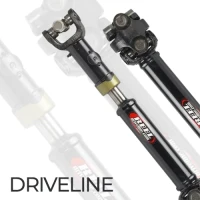
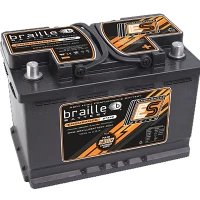
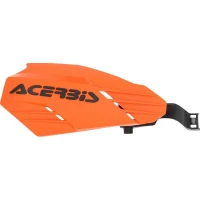
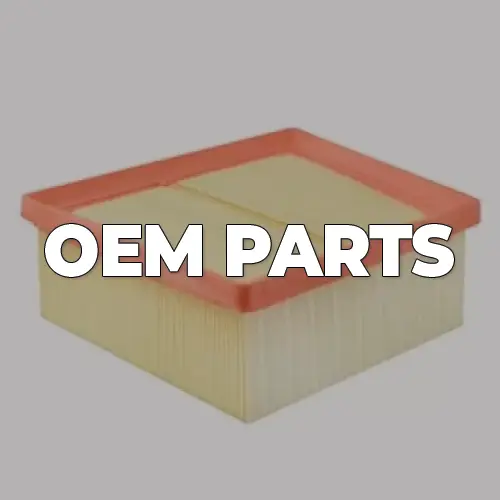

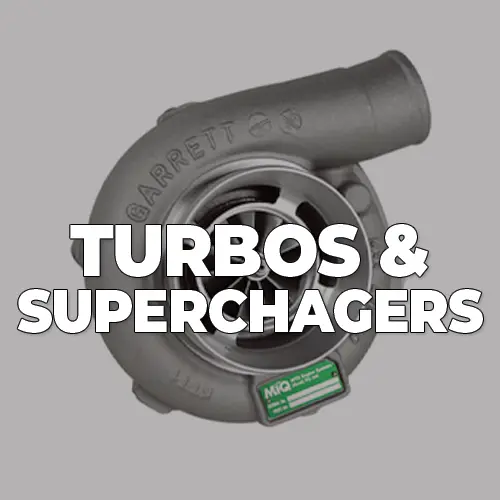
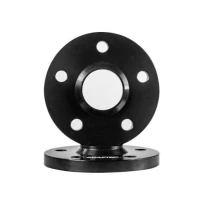
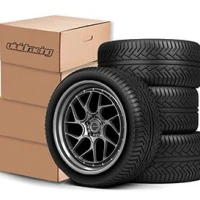
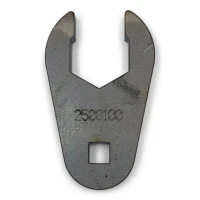
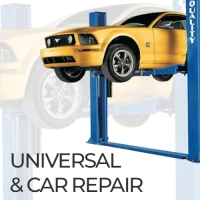
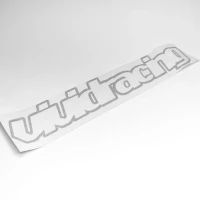
.jpeg?q=90&p=thumb&w=40&h=40) Brakes
Brakes  Driveline
Driveline  Electronics
Electronics  Handlebars & Controls
Handlebars & Controls  Package Deals
Package Deals  Wheel Accessories
Wheel Accessories  Wheels by Vehicle
Wheels by Vehicle  Tools and Maintenance
Tools and Maintenance  Universal & Repair
Universal & Repair  Vivid Racing Gear
Vivid Racing Gear 